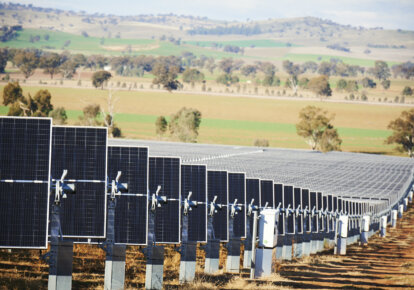On one side of it, fossil fuels deliver reliable power. On the other side, renewable energy delivers affordable and sustainable power.
One solution being applied to the trilemma is Energy Demand Management.
The power system is built to cater to peaks at all times – even when customers aren’t using it. That’s how the networks, generators and market operator make sure businesses can keep the lights on.
Many businesses are now adopting demand management solutions for the incentives and low costs involved. Customers utilising Flow Power’s Market Monitoring are perfectly equipped to know exactly when to start demand management. This is usually in the form of:
- Load curtailment: This involves reducing the amount of power being used at the time. Examples include: machinery that cycles between on and off but reduces overall usage with a small impact on operations, switching from high to low temperature settings, off-peak appliances that operate outside peak times.
- Local generation: This involves switching to local sources of power rather than drawing from the power market. Examples include: back-up generators, behind the meter solar systems or batteries.
- Energy efficiency: This involves installing devices that reduce the overall use of power at the site. Examples include: LED lighting systems, insulation, more efficient pumps or machinery.
How to get on board
The more businesses that adopt a demand management solution, the lower the demand during peak periods.
The Australian industry is already saving millions of dollars thanks to demand management. However, according to reports from the Australian Energy Market Commission (AEMC), Australia could save a lot more – somewhere between $4.3 to $11.8 billion – across the next decade if most businesses were to adopt a demand-side solution.
To the future and beyond
The AEMC and the Australian Energy Regulator are currently pushing a reform on large energy retailers to encourage their customers to adopt a demand-side solution.
Known as the Demand Management Incentive Scheme, the reform will apply to ACT and NSW businesses in 2019, and the other states sometime after. The scheme should help networks bolster the use of various network resources and save money by reducing infrastructure expenditure. It could also further reduce:
- Carbon emissions
- New network developments
- The need for gas-fired power stations
- Wholesale energy prices
Any questions? We’re here to help.
If you’re interested in learning more about energy management solutions, our friendly team are always available for a chat.
If you’re an existing Flow Power customer, please do not hesitate to reach out to your account manager.
If you’re not a Flow Power customer contact our friendly team today:
? 1300 08 06 08 (within business hours)
?️ Live chat message (within business hours via the chat button at the bottom of your screen)
Alternatively, you can submit your questions through our website contact form here.














